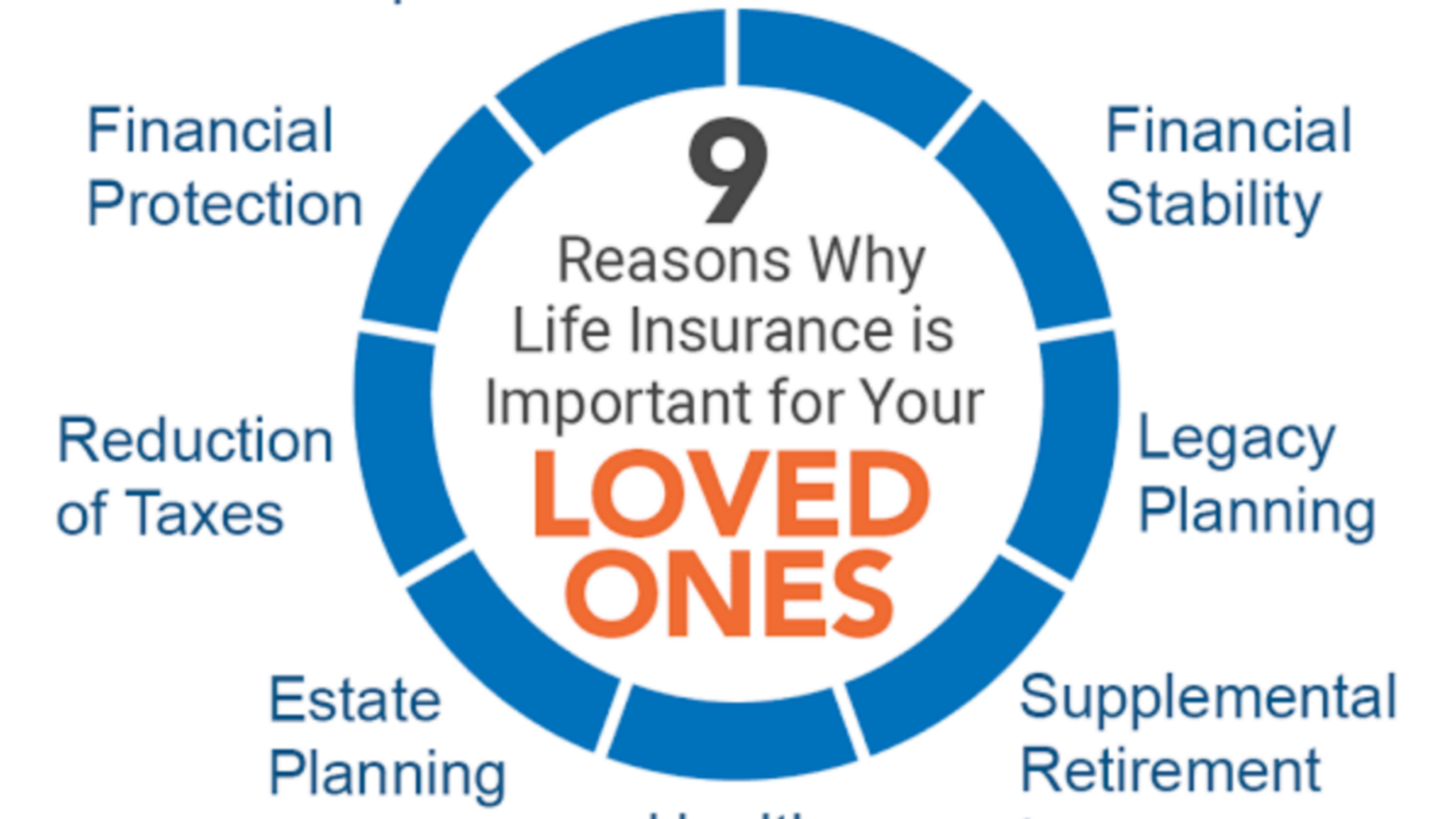Imagine this: you’re driving down a scenic highway, windows down, enjoying the fresh air. Suddenly, a deer darts out onto the road. You slam on the brakes, narrowly avoiding a collision. Your heart races, but then a sense of calm washes over you. You know you’re covered. That’s the power of personal insurance – it provides a safety net, a shield against the unexpected events that life can throw your way.
In this comprehensive guide, we’ll delve into the world of personal insurance, answering all your burning questions and empowering you to make informed decisions. We’ll explore different types of coverage, navigate key terms, and guide you on the path to finding the perfect insurance plan for your unique needs. Let’s unlock peace of mind, together.
What is Personal Insurance? (and Why is it Important?)
Personal insurance is a financial safety net that protects you from a variety of potential losses. It acts as a shield against unforeseen events that could wreak havoc on your finances. Here’s a breakdown of why personal insurance is a crucial part of any financial plan:
- Financial Security: Imagine a major medical emergency or a car accident leaving you with a hefty bill. Personal insurance helps shoulder these burdens, preventing them from derailing your financial well-being.
- Peace of Mind: Knowing you’re covered allows you to face life’s uncertainties with a sense of calm and security. You can focus on what truly matters, without the constant worry of what a potential mishap might cost.
- Protecting Your Assets: From your car and home to your belongings, personal insurance safeguards your valuable assets. In the event of a covered loss, you’ll receive financial compensation to repair or replace them.
Different Types of Personal Insurance: Tailoring Protection to Your Needs
The beauty of personal insurance lies in its versatility. There’s a wide range of coverage options available, each catering to specific needs and situations. Here’s a glimpse into some of the most common types of personal insurance:
- Health Insurance: This is your shield against the ever-rising costs of medical care. Health insurance plans typically cover doctor visits, hospital stays, surgeries, and prescriptions, offering financial protection in the event of illness or injury.
- Life Insurance: This plan provides a financial benefit to your loved ones in the event of your passing. It ensures your family’s financial stability during a difficult time. There are two main types of life insurance: term life, which offers coverage for a specific period, and whole life, which combines coverage with a savings component.
- Auto Insurance: This is mandatory for anyone driving a vehicle on the road. Auto insurance protects you financially in case of an accident, covering repairs to your car, as well as injuries sustained by yourself or others involved in the accident.
- Homeowner’s Insurance (or Renter’s Insurance): Owning a home or renting an apartment comes with its own set of risks. Homeowner’s insurance safeguards your property against damage caused by fire, theft, vandalism, and other covered perils. Renter’s insurance, on the other hand, protects your belongings within the rented space.
This is just a starting point! There are numerous other types of personal insurance available, such as disability insurance, dental insurance, and even pet insurance. We’ll delve deeper into each type of coverage in the following sections, helping you understand what they cover and how they can benefit you.
Ready to move on to the next section? Let me know when you’d like to explore “Understanding Your Needs – The Foundation of a Secure Future”.
Understanding Your Needs: The Foundation of a Secure Future

Before diving headfirst into the specifics of different insurance plans, it’s crucial to understand your individual needs and risk tolerance. This self-assessment forms the foundation of a secure financial future. Here’s a breakdown of key factors to consider:
Identifying Your Assets & Liabilities:
- What are your most valuable assets? Make a list of your possessions, including your home, car, jewelry, and other valuables. This will help you determine the level of coverage you need to protect them.
- Do you have any outstanding debts? Consider mortgages, student loans, car loans, or any other liabilities you might have. Life insurance can play a crucial role in ensuring these debts are settled in case of your passing, offering peace of mind to your loved ones.
- Considering future plans? Are you planning to get married, have children, or start a business? These life events might impact your insurance needs. For instance, you might need to adjust your life insurance coverage or consider disability insurance to protect your future income.
Lifestyle & Risk Tolerance:
- Do you travel frequently? If you travel often, especially internationally, consider travel insurance to protect yourself against unexpected medical emergencies or trip cancellations.
- Do you engage in any hobbies that might carry a higher risk? Enjoy extreme sports like skydiving or rock climbing? You might need specialized insurance coverage for such activities.
- How comfortable are you with financial surprises? Some people prefer comprehensive coverage with a lower deductible, even if it means paying higher premiums. Others might be comfortable with a higher deductible in exchange for a lower premium. Understanding your risk tolerance will help you choose the right plan.
By taking a comprehensive inventory of your assets, liabilities, lifestyle, and risk tolerance, you’ll be well-equipped to navigate the world of personal insurance and choose plans that provide tailored protection for your unique needs.
Ready to move on to the next section? Let me know when you’d like to explore “Types of Personal Insurance: Tailoring Protection to Your Life”.
Types of Personal Insurance: Tailoring Protection to Your Life
Now that you have a solid understanding of your needs and risk tolerance, let’s delve into the various types of personal insurance available and explore how they can safeguard your well-being:
1. Health Insurance:
- Understanding Health Insurance Plans: There are two main types of health insurance plans: Health Maintenance Organizations (HMOs) and Preferred Provider Organizations (PPOs). HMOs typically require you to choose a primary care physician within their network for most of your medical care. PPOs offer more flexibility, allowing you to visit any doctor or specialist, but often at a higher cost.
- What Does Health Insurance Typically Cover? Health insurance plans typically cover a wide range of medical expenses, including:
- Doctor visits
- Hospital stays
- Surgeries
- Prescriptions
- Preventive care (depending on the plan)
- Considering Additional Health Insurance Needs: Beyond basic health insurance, you might also want to consider additional coverage options such as:
- Dental insurance: Covers preventive and restorative dental care.
- Vision insurance: Helps offset the costs of eye exams, glasses, and contacts.
2. Life Insurance:
- Term Life vs. Whole Life Insurance:
- Term Life Insurance: This is a temporary insurance policy that provides a death benefit to your beneficiaries if you pass away within a specified period (term). Term life insurance is typically more affordable than whole life insurance.
- Whole Life Insurance: This type of insurance offers lifelong coverage and combines a death benefit with a cash value component. The cash value accumulates over time and you can borrow against it or withdraw funds (depending on the policy). Whole life insurance premiums are typically higher than term life premiums.
- How Much Life Insurance Coverage Do You Need? There’s no one-size-fits-all answer to this question. A good rule of thumb is to consider your outstanding debts, future income needs of your family, and desired lifestyle for your beneficiaries. Financial advisors can help you determine the appropriate amount of coverage.
- Who Should Be Your Beneficiary? Your beneficiary is the person or entity who will receive the death benefit from your life insurance policy. You can choose one or multiple beneficiaries and designate a percentage share for each.
3. Auto Insurance:
- Required Auto Insurance Coverage: Most states require drivers to carry minimum liability insurance. Liability insurance covers injuries and property damage caused to others in an accident that you are at fault for.
- Understanding Different Coverage Options: In addition to mandatory liability coverage, you can consider additional options to customize your auto insurance plan:
- Collision coverage: Pays for repairs to your car if it’s damaged in a collision with another vehicle or object.
- Comprehensive coverage: Covers damage to your car caused by events other than collisions, such as theft, fire, vandalism, and weather events.
- Roadside assistance: Provides services like towing, jumpstarts, and flat tire changes in case of a breakdown.
- Factors Affecting Your Auto Insurance Premium: Several factors influence your auto insurance premium, including:
- Driving record: A clean driving record with no accidents or violations typically translates to lower premiums.
- Car type: The make, model, and year of your car can impact your premium. Generally, sports cars and luxury vehicles tend to have higher premiums.
- Your age and location: Younger drivers and those living in densely populated areas typically pay higher premiums.
- Your annual mileage: The more you drive, the higher your premium might be.
4. Homeowner’s Insurance (or Renter’s Insurance):
- What Does Homeowner’s Insurance Typically Cover? This type of insurance safeguards your home against various perils, including:
- Fire
- Theft
- Vandalism
- Weather damage (depending on the policy)
- Liability coverage (in case someone gets injured on your property)
- Understanding Different Coverage Options: Homeowner’s insurance comes in different forms, with varying levels of coverage. Here are two common options:
- Actual cash value coverage: Reimburses you for the depreciated value of your belongings in case of a covered loss.
- Replacement value coverage: Pays you the cost to replace your belongings with new ones of similar quality.
- Considering Additional Coverage Options: Depending on your location, you might want to consider additional coverage for specific risks, such as:
- Flood insurance: Protects your home from flood damage.
- Earthquake insurance: Covers damage caused by earthquakes.
**Remember, this is just a general overview of some of the most common types
Demystifying Insurance Jargon: Understanding the Fine Print

Personal insurance policies can be filled with unfamiliar terms and phrases. Understanding this terminology is crucial for making informed decisions when choosing a plan. Let’s break down some key concepts:
Deductibles, Premiums & Coverage Limits
- Deductible: This is the amount you pay out of pocket before your insurance kicks in. Choosing a higher deductible typically results in a lower premium, but you’ll shoulder more responsibility for covered costs in the event of a claim.
- Premium: This is the amount you pay periodically (monthly, quarterly, or annually) to maintain your insurance coverage. Premiums are calculated based on various factors, including your risk profile, coverage level, and chosen deductible.
- Coverage Limits: These set the maximum amount your insurance company will pay for a covered loss. It’s essential to choose coverage limits that adequately reflect the value of your assets. For instance, if your homeowner’s insurance has a low coverage limit for jewelry and you have a valuable collection, you might need additional coverage through a separate rider.
Filing a Claim – What to Expect When You Need It Most
- The Claims Process Explained (Step-by-Step):
- Report the incident: Contact your insurance company as soon as possible after a covered event (accident, theft, etc.).
- File a claim: Your insurance company will provide you with a claim form to fill out. Gather necessary documentation, such as police reports, medical records, or repair estimates.
- Adjuster investigation: An insurance adjuster might be assigned to investigate the claim and assess the damages.
- Settlement offer: The insurance company will review your claim and present a settlement offer. You can negotiate the offer if needed.
- Receive payment: Once the claim is approved, you’ll receive payment according to the terms of your policy.
- Important Documents to Gather When Filing a Claim: The specific documents needed will vary depending on the claim, but here are some general recommendations:
- Police report (for accidents or theft)
- Medical records (for health insurance claims)
- Receipts or repair estimates (for property damage)
- Photographs of the damage
- Tips for a Smooth Claims Experience:
- Know your policy details: Familiarize yourself with your coverage limits, deductibles, and the claims filing process.
- Document everything: Keep detailed records of the incident, including photos and receipts.
- Be truthful and cooperative: Provide accurate information to your insurance company throughout the claims process.
By understanding these key terms and the claims filing process, you’ll be well-equipped to navigate any situation that necessitates filing a claim. Remember, your insurance company is there to support you during difficult times – don’t hesitate to ask questions and seek clarification if anything is unclear.
Ready to move on to the next section? Let me know when you’d like to explore “Finding the Right Insurance Provider – Getting the Best Value”.
Finding the Right Insurance Provider – Getting the Best Value
Choosing the right insurance provider is just as important as selecting the appropriate coverage. A reliable provider with competitive rates and exceptional customer service can make a world of difference. Here’s a breakdown of key considerations to guide you in your search:
Shopping Around & Comparing Quotes
- The Importance of Comparing Quotes: Don’t settle for the first insurance company you come across. Get quotes from multiple providers to compare coverage options and premiums.
- What Factors to Consider When Comparing Plans: Here are some key factors to evaluate when comparing insurance plans:
- Coverage: Make sure the plan offers the level of coverage you need for your assets and liabilities.
- Premiums: Compare premium costs across different providers. Don’t be afraid to negotiate for a better rate.
- Customer Service: Research the reputation of the insurance company for customer service. Read online reviews and ask friends or family for recommendations.
- Financial Stability: Choose an insurance company with a strong financial rating to ensure they can meet their obligations in the event of a claim.
- Tips for Negotiating with Insurance Companies: Don’t be afraid to leverage your good driving record, loyalty to a particular company (if applicable), or bundling multiple policies (e.g., home and auto) to negotiate for a lower premium.
Understanding Agent vs. Direct Insurance
- Benefits of Working with an Insurance Agent: Insurance agents represent multiple insurance companies and can shop around for the best rates and coverage options on your behalf. They can also provide personalized advice and guidance throughout the process.
- Advantages of Buying Directly from an Insurance Company: Buying directly from an insurance company can sometimes be cheaper as you bypass the agent’s commission. However, you’ll need to do more research and legwork to find the right plan.
Ultimately, the choice between an agent and a direct provider depends on your individual needs and preferences. If you value personalized service and expert guidance, an agent might be a good fit. If you’re comfortable doing your own research and prioritize cost-effectiveness, buying directly might be the way to go.
Here are some additional tips for finding the right insurance provider:
- Ask for recommendations: Talk to friends, family, and colleagues for recommendations on insurance companies and agents.
- Read online reviews: Check online review sites to see what other customers are saying about different insurance providers.
- Consider online insurance companies: Many reputable online insurance companies offer competitive rates and convenient online tools for managing your policies.
Remember, finding the right insurance provider is an investment in your peace of mind. Take your time, do your research, and compare options before making a decision.
Ready to move on to the next section? Let me know when you’d like to explore “Maintaining Your Coverage – Keeping Your Peace of Mind Secure”.
Maintaining Your Coverage – Keeping Your Peace of Mind Secure

Obtaining the right insurance plan is just the first step. To ensure your peace of mind remains secure, here’s how to effectively manage and maintain your coverage over time:
Regular Policy Reviews
- Why Reviewing Your Policies Regularly is Important: Life circumstances are dynamic. Regularly reviewing your insurance policies ensures your coverage continues to meet your evolving needs.
- How Often Should You Review Your Policies? It’s recommended to review your policies at least annually. However, consider conducting more frequent reviews if you experience any major life changes, such as:
- Getting married or having children (might necessitate increased life insurance coverage)
- Buying a new home or car (requires adjustments to your property and auto insurance)
- Starting a business (might require additional liability coverage)
- Approaching retirement (might necessitate changes to your health insurance plan)
Keeping Your Insurance Provider Updated
- Reporting Life Changes That Might Impact Your Coverage: Certain life changes can affect your insurance premiums or coverage. Here are some examples:
- Marriage or birth of a child (might qualify you for discounts on certain plans)
- Moving to a new location (premiums can vary based on location and risk factors)
- Upgrading your car (might impact your auto insurance premium)
- Taking a defensive driving course (can qualify you for discounts on auto insurance)
- Maintaining a Good Driving Record and Credit Score: A clean driving record and a good credit score can significantly lower your insurance premiums. Practice safe driving habits and work towards maintaining a healthy credit score to benefit from lower rates.
By keeping your insurance company informed of life changes and prioritizing responsible actions like safe driving, you can ensure your coverage remains accurate and reflects your current needs.
In Conclusion: The Enduring Value of Personal Insurance
Personal insurance is an investment in your financial security and well-being. By understanding your needs, exploring different coverage options, choosing the right provider, and maintaining your policies, you can build a safety net that protects you from life’s unexpected events.
Here are some resources to help you get started:
- The National Association of Insurance Commissioners (NAIC): https://content.naic.org/
- The Insurance Information Institute (III): https://www.iii.org/index.html
- Consumer Reports Insurance Buying Guide: https://www.consumerreports.org/money/car-insurance/
With proper knowledge and planning, you can unlock the true power of personal insurance and achieve long-lasting peace of mind.
Bonus Section: Common Personal Insurance Myths Debunked
We’ve covered a lot of ground, but there are still some lingering misconceptions about personal insurance. Let’s debunk some of the most common myths to ensure you make informed decisions:
- Myth: Young and healthy people don’t need health insurance.
Even young and healthy individuals can face unforeseen medical emergencies. An accident, sudden illness, or even a routine procedure can result in substantial medical bills. Health insurance safeguards you from financial hardship in such situations.
- Myth: Life insurance is only for people with families.
Life insurance isn’t just about supporting your dependents. It can be used for various purposes, such as:
* **Paying off outstanding debts:** Life insurance can ensure your loved ones don't inherit your financial burdens.
* **Funding a child's education:** A life insurance policy can help secure your child's future educational needs.
* **Leaving a legacy:** You can use life insurance to leave a financial gift to a charity or loved one.
- Myth: Basic car insurance is enough coverage.
Minimum liability insurance only covers the other party’s expenses in case of an accident you cause. It doesn’t protect your own car or compensate you for medical bills. Consider additional coverage options like collision and comprehensive insurance to safeguard your vehicle and yourself.
- Myth: Filing a claim will increase my insurance premiums.
While it’s true that filing a claim can sometimes lead to a premium increase, it doesn’t always happen. Insurance companies consider various factors when determining premiums, including your driving record, the severity of the claim, and the number of claims you’ve filed in the past.
- Myth: I can cancel my renter’s insurance if my landlord has property insurance.
A landlord’s insurance policy protects the building itself, not your personal belongings. Renter’s insurance safeguards your furniture, electronics, and other valuables in case of theft, fire, or other covered perils.
By understanding these common myths, you can make well-informed decisions about your personal insurance needs and avoid leaving yourself financially vulnerable during challenging times.
